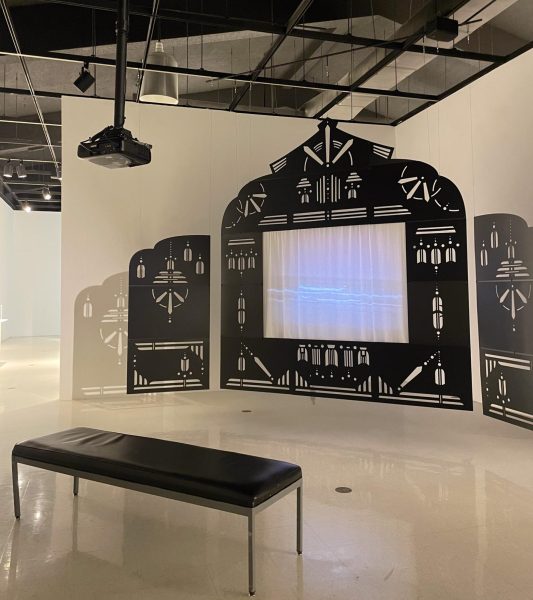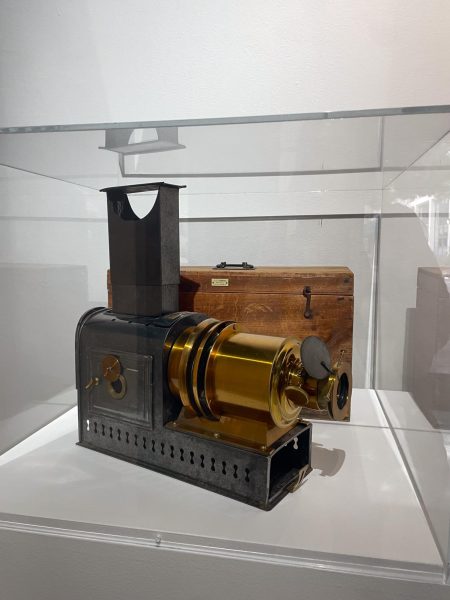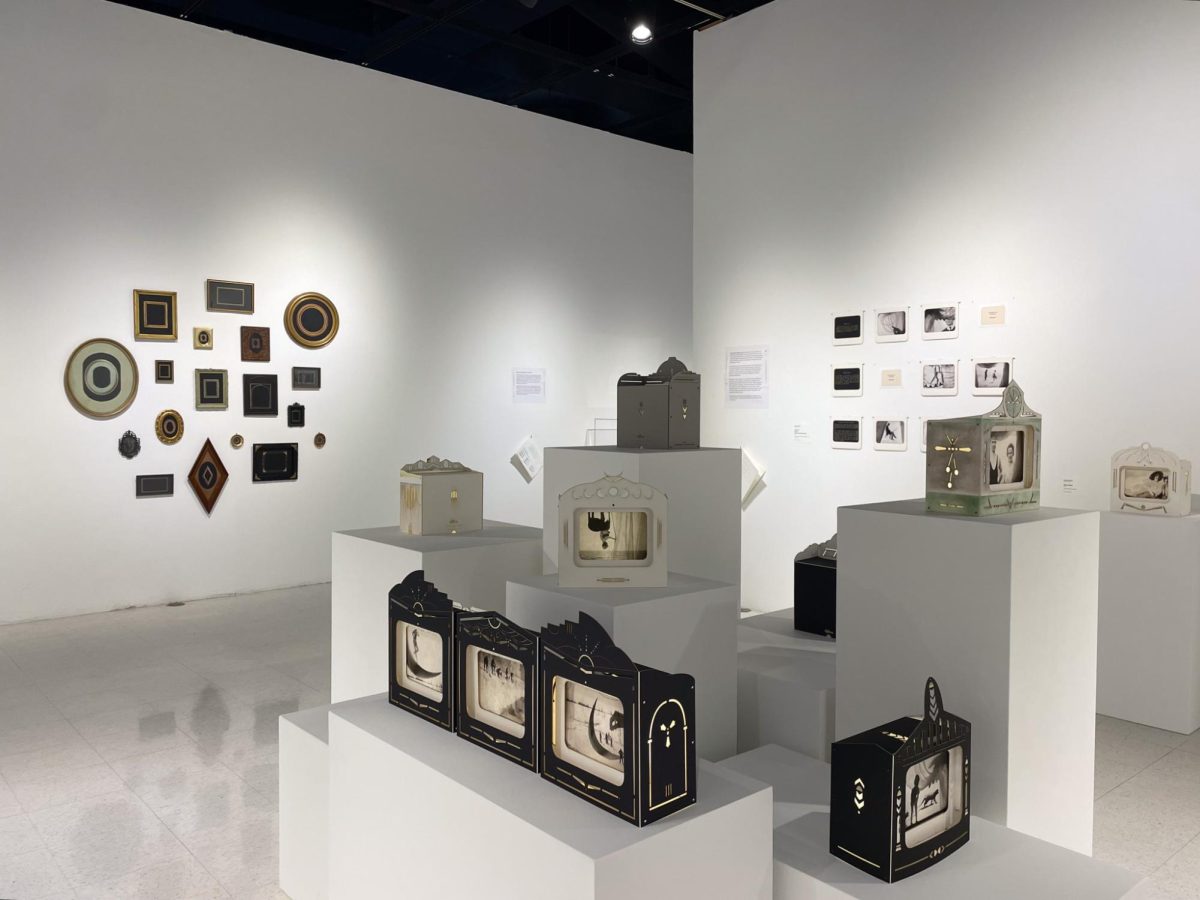“Holding Time, Tracing Light”, an art exhibition created by Rachel Phillips and organized by the San Diego State University Art Galleries, will be on display in Art North until Dec. 7.
Phillips, an artist from the San Francisco Bay Area, developed the exhibition in collaboration with SDSU’s University Archives and Special Collections.
“I was thrilled to spend a week as an artist in residence in the archive at Special Collections, viewing and scanning some of the hundreds of glass slides held in the Peabody Collection,” Phillips said. “It was like a treasure hunt, carefully looking through a diverse range of topics from fairy tales like Cinderella to medical instruction x-ray slides, from the geography of California to animated cartoon parodies.”
The exhibition is an interactive and thoughtful collection of the different series Phillips has developed over the last decade, along with select items that were incorporated from the Peabody Collection.
“Finding ways to connect these items to my series about cinema in the early 20th century was a dream,” Phillips said, adding how the process of creating this exhibit has not only helped her learn more about history but also find creative inspiration.
Her exhibit studies the beginnings of photography, focusing on older forms of the art such as vernacular photographs, image projectors called magic lanterns and the colorful glass projection slides that would go inside them.
“While I have worked with (Special Collections and University Archives) in the past for exhibitions, this was the first time we were able to share the gallery in this way,” said Chantel Paul, SDSU’s Galleries and Exhibitions coordinator. “Magic lanterns are having a bit of a moment right now and there seems to be a zeitgeist around their resurgence in exhibitions.”
The first room of the exhibition showcases these kinds of devices, explaining their history, how they became popular and the purpose they served.
The next room featured an exhibit titled “Growing Pains,” which contained a collection of vernacular photographs from Frances Benjamin Johnston, a female photographer who published her photos in the early 19th century when photography was still a widely male-dominated field.

Phillips felt drawn toward the photos that illustrated the struggles that women continue to face today.
To display them, she overlaid the photos onto envelopes, adding color and her own artistic style to them. The use of yellow across all the photographs represented the yellow rose that was worn by women who pushed for the ratification of the 19th Amendment during the women’s suffrage movement.
This room also featured an artistic layout of several self-portraits that prompted viewers to look at them through a pair of 3D glasses, creating a unique, distorted effect which added a modern flair to these old photographs.
Although the exhibit contains a wide collection of Phillips’ artwork, the gem of the exhibit was her “Ghost Light Theaters” collection, a series of vintage theater models with images displayed inside, inspired by Fantasy Art Deco movie theaters popular in the 1920s to 1940s.
Phillips felt compelled to create this art by her personal connection to this style of theater, which she said she attended often when growing up.
“(These theaters showed) only films from Hollywood’s Golden Age, I munched my popcorn and raisinets while memorizing Bogart and Bacall,” Phillips said. “This immersion in glorious black and white movies I consider my introduction to photography, and “Ghost Light Theaters” is an homage to that formative experience.”
One of the exhibit rooms featured a life-size Ghost Light Theater modeled after this style, suspended in the air with a bench for visitors to view a short film. This styled theater created an immersive experience for visitors because of the installation, which added appreciation for the beginnings of cinema and camera obscura.
The film shown inside the make-shift theater — produced by Phillips — consisted of a showcase of vernacular photographs accompanied by short phrases displayed on a black screen, replicating the era of silent cinema.

The following room consisted of miniaturized Ghost Light Theaters with ornate black and white frames, adorned with intricate designs around the edges that displayed photos illuminated by a candle placed behind the image.
“I just love the imagery of the centaur and the ways that Rachel incorporated shadows and multiple exposures to create something whimsical and intriguing from her collection of found photographs,” said Chantel Paul, who noted that the Ghost Light Theaters were incredibly well done. Paul further added that it was one of her favorite aspects of the exhibition, especially the one titled “Tiny Elephants.”
The exhibition — highlighting Phillips’ ability to reimagine source material from decades ago — illustrates how she can transform them with her own unique style, turning something from the past into a new form of art with a new perspective.
“For Rachel Phillips, exploring the past is a way of envisioning the future,” read the plaque at the front of the exhibit. “In a time when the proliferation and speed of creating images is as dense as it has ever been — especially on social media — she invites us to slow down, open our imaginations and give in to our sense of wonder.”
The exhibition is open Tuesdays through Thursdays from noon to 4 p.m. in Art North in the University Art Gallery.






